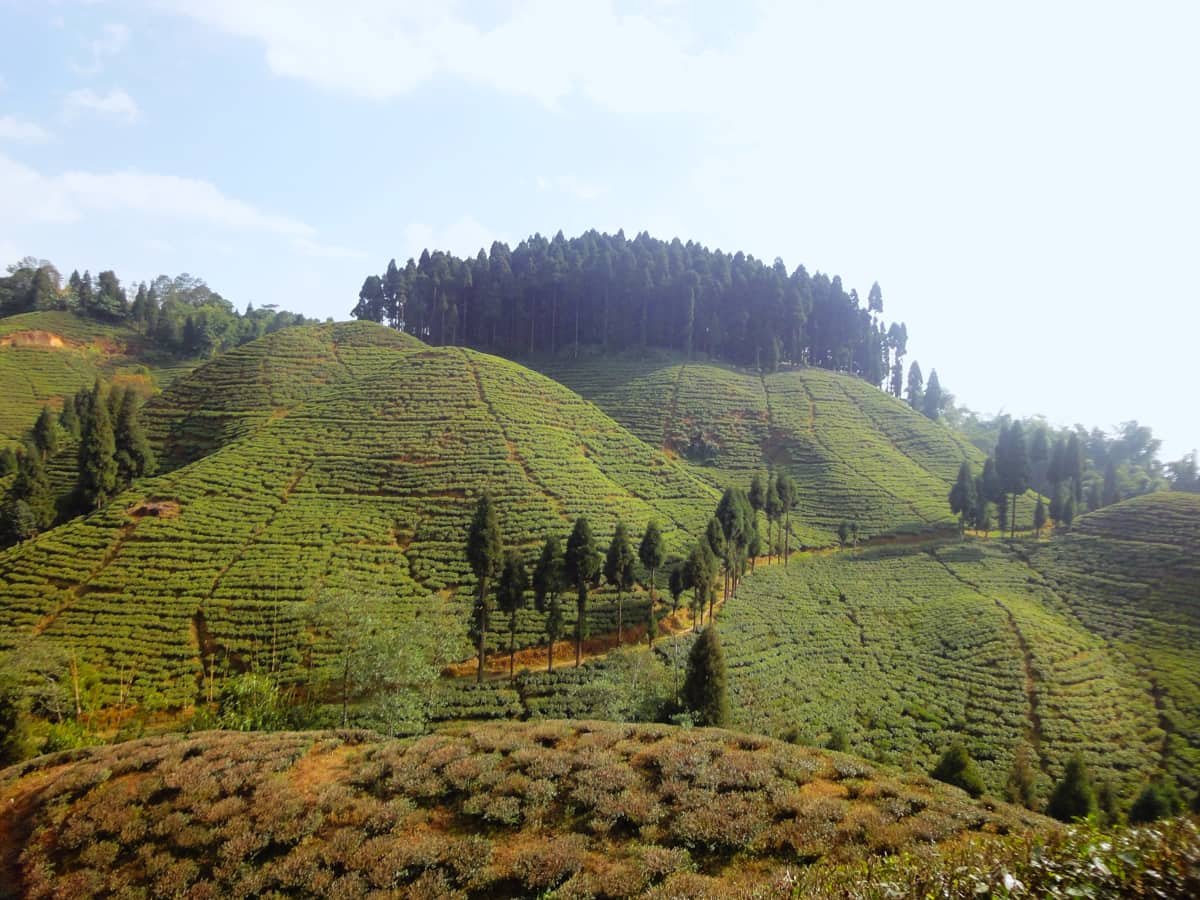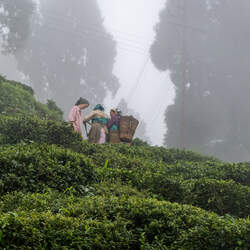Discover Darjeeling: A Journey Through the Tea Gardens

Introduction
Overview of Darjeeling
Nestled in the foothills of the Himalayas, Darjeeling is renowned for its breathtaking landscapes, diverse flora and fauna, and its vibrant culture. Known as the “Queen of the Hills,” this charming hill station attracts visitors from all over the world. The cool climate and verdant surroundings make it an ideal location for tea cultivation, contributing to its reputation as a hotspot for tea enthusiasts.
Significance of Darjeeling Tea Gardens
The tea gardens of Darjeeling are more than just picturesque landscapes; they play a pivotal role in the local economy and culture. These gardens are significant for several reasons:
- Cultural Heritage : The tea estates are steeped in history, representing a fusion of British colonial influence and local tradition.
- Economic Impact : Darjeeling tea contributes substantially to the livelihoods of thousands of local families.
- Biodiversity : The gardens are home to a myriad of plant and animal species, supporting the region’s ecological balance.
Visiting these tea gardens offers not just a taste of world-renowned tea, but also an immersion into the rich tapestry of Darjeeling’s heritage.

History of Darjeeling Tea
Origins of Tea Cultivation in Darjeeling
The story of Darjeeling tea begins in the early 19th century, when the British colonialists recognized the region’s potential for tea cultivation. Initially, seeds from China were introduced, leading to the establishment of the first tea plantations around 1852. The stunning altitude, ranging from 600 to 2000 meters, created the perfect climate for cultivating high-quality tea.
Evolution of Darjeeling Tea Industry
Over the years, the Darjeeling tea industry has undergone significant evolution, shaping it into what it is today:
- Colonial Expansion : The expansion of tea gardens in the 19th century led to the establishment of many renowned estates.
- Certification : In 2004, Darjeeling tea was awarded Geographical Indication (GI) status, safeguarding its uniqueness and quality.
- Global Recognition : Today, Darjeeling tea is celebrated worldwide for its exquisite flavors, contributing to the area’s thriving tourism.
From humble beginnings, the Darjeeling tea industry has blossomed into a significant cultural and economic pillar of the region, attracting tea lovers from across the globe.

Exploring Darjeeling Tea Gardens
Layout and Features of Tea Gardens
Visiting the tea gardens of Darjeeling is like stepping into a living postcard. These sprawling estates are characterized by:
- Terraced Fields : The iconic terraced layout enables the efficient cultivation of tea, showcasing the mastery of local farming techniques.
- Lush Greenery : The vibrant rows of tea bushes, dusted with mist, create stunning landscapes that are captivating to behold.
- Heritage Bungalows : Many estates feature colonial-era bungalows, offering a glimpse into the rich history and culture of tea cultivation.
Tea Production Process
Understanding how Darjeeling tea is produced adds depth to any visit:
- Plucking : Only the tender top leaves and buds are picked, usually by skilled hands.
- Withering : Leaves are laid out to wilt, reducing moisture for oxidation.
- Rolling : The withered leaves are rolled to release essential oils, enhancing flavor.
- Oxidation : The leaves are allowed to oxidize, developing different flavor profiles.
- Drying : Finally, the leaves are dried to lock in flavor and preserve their signature characteristics.
This meticulous process not only results in Darjeeling’s exquisite tea but also connects visitors to the art and passion behind every cup.

Unique Flavors of Darjeeling Tea
Types of Darjeeling Tea
Darjeeling tea is often referred to as the “Champagne of teas” due to its unique and varied flavor profiles. The primary types include:
- Black Tea : Rich and full-bodied, making for a classic afternoon brew.
- Green Tea : Delicate and less oxidized, offering fresh and grassy notes.
- Oolong Tea : Semi-oxidized, striking a balance between black and green, with complex flavors.
- White Tea : The most delicate, harvested only in spring; it’s a treat for purists.
Tasting and Comparing Flavors
Tasting Darjeeling tea is an experience unto itself. With each type presenting distinct notes, tea lovers can embark on a flavorful journey:
- First Flush : Light, floral, and muscatel flavors make it ideal for a refreshing morning cup.
- Second Flush : Often with richer, fruity notes, perfect for those seeking a bolder taste.
- Monsoon Flush : Typically less favored; however, its unique character surprises some with earthy undertones.
Sampling different varieties not only highlights their individuality but also showcases the diverse terroir of Darjeeling, making every sip an adventure.

Tourism in Darjeeling
Visiting Tea Estates
Visiting the tea estates of Darjeeling offers travelers a unique glimpse into the world of tea cultivation. Many estates welcome visitors, providing:
- Guided Tours : Knowledgeable guides share the history, cultivation techniques, and processing methods.
- Tea Tastings : Guests can savor various tea types fresh from the garden, experiencing their diverse flavors firsthand.
- Stunning Views : The picturesque landscapes of rolling hills provide a breathtaking backdrop for photography and relaxation.
Cultural Experience in Darjeeling
The cultural tapestry of Darjeeling enriches the visitor experience. Engaging with local customs and traditions enhances any trip. Highlights include:
- Local Festivals : Events like the Tea and Tourism Festival showcase vibrant performances and culinary delights.
- Culinary Exploration : Sampling local delicacies such as momos and thukpa connects visitors to the regional cuisine.
- Cultural Workshops : Participating in traditional crafts or cooking classes offers a hands-on experience.
Embracing both the beauty of the tea gardens and the rich local culture makes a trip to Darjeeling unforgettable.

Sustainability Practices in Darjeeling Tea Industry
Environmental Conservation Efforts
The Darjeeling tea industry has increasingly prioritized sustainable practices to protect its stunning ecology. Many estates have adopted measures such as:
- Organic Farming : Reducing chemical pesticides and fertilizers promotes healthier soil and tea plants.
- Water Conservation : Rainwater harvesting systems help manage water resources efficiently.
- Biodiversity Preservation : Initiatives are in place to protect local flora and fauna, ensuring the ecosystem remains balanced.
Social Impact Initiatives
Social responsibility is another cornerstone of sustainability in the Darjeeling tea industry. Estates often implement initiatives to support local communities, including:
- Fair Wages : Ensuring workers receive a living wage enhances their standard of living.
- Education Programs : Scholarships and vocational training empower the next generation.
- Community Health : Initiatives to provide healthcare facilities improve overall well-being for tea pickers and their families.
These sustainable practices not only enhance the quality of Darjeeling tea but also contribute positively to the environment and society, making the region a model for responsible tourism and agriculture.

Conclusion
Recap of Darjeeling Tea Journey
Exploring Darjeeling tea has been a fascinating journey through history, nature, and culture. From the origins of tea cultivation to the intricate processes of production, the rich tapestry of flavors and experiences is astounding. Visitors to the tea gardens can enjoy stunning landscapes, engage in cultural traditions, and embrace sustainable practices that shape the industry today.
Final Thoughts on Darjeeling Tea Gardens
The charm of Darjeeling tea gardens is truly unparalleled. They offer not just world-class tea but a narrative of resilience, community, and ecological harmony. Whether you are a tea aficionado or a casual sipper, immersing yourself in this unique region fosters a deeper appreciation for the craft of tea-making. Ultimately, visiting Darjeeling tea gardens inspires a connection to both nature and the heart of this remarkable land.




